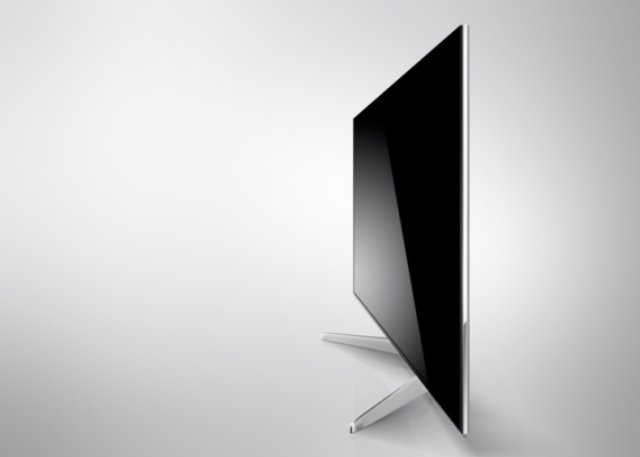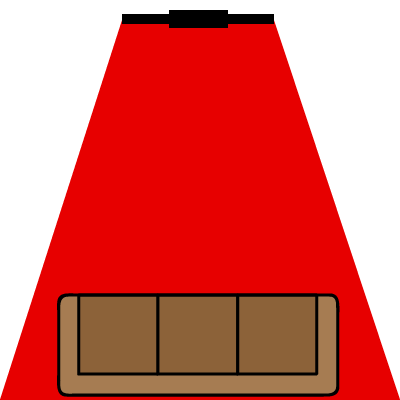 TV technology just keeps getting better every year, to the point it is hard to keep track and understand it all. One of the least talked about but greatest technological improvements for LCD screens is “in-plane switching” (IPS). IPS has advanced quite a bit in recent years and is definitely worth paying attention to because it is now behind the best LCD screens. The various screen technologies can be a bit confusing so let me try to explain what you need to know about IPS vs. others.
TV technology just keeps getting better every year, to the point it is hard to keep track and understand it all. One of the least talked about but greatest technological improvements for LCD screens is “in-plane switching” (IPS). IPS has advanced quite a bit in recent years and is definitely worth paying attention to because it is now behind the best LCD screens. The various screen technologies can be a bit confusing so let me try to explain what you need to know about IPS vs. others.
There are 3 basic types of screen technologies: plasma, LCD, and OLED. IPS is related only to LCD screens, so it is not something that you have to be concerned with if you are looking at a plasma or OLED set. If you are wondering where LED screens fit into the mix, they are a type of LCD screen (). Original LCD screens used cold cathode fluorescent lamps (CCFL’s) and then LED lights took over to the point that LED is now the by far the most common type of backlight for LCD TV’s. For that reason I will use the term LED instead of LCD. You just won’t find many LCD TV’s on the market today that are not LED.
So, if you are looking for a new LED TV, which by far outsells plasma and OLED, then you should pay attention to IPS technology. Let me explain why.
For LED TVs, there are three fundamental display technologies being used: TN, VA, and IPS. I will explain the differences but the easiest way to think of them is “good, better, best” when it comes to LED screens. Although I am going to talk about TV’s, these technologies also apply to computer monitors, tablets, and Smartphones that also have LCD screens.
Twisted Neumatic (TN)
TN technology is the earliest LCD display technology of the three, and is what made the original LCD screens practical to produce. They are called twisted neumatic because the liquid crystals twist and untwist as voltage is applied so light can pass through to create the picture. Some advantages of TN technologies include:
- it is the lowest cost to produce and are essentially used by entry-level budget TV’s,
- have the fastest response times, although VA and IPS screens are now fast enough that you shouldn’t notice any motion issues,
- TN is best for gamers because of those fast response times.
 The disadvantages of TN technology are :
The disadvantages of TN technology are :
- it has a narrow viewing angle, which means that unless you are seated directly in front of the TV the colour will start to appear more washed out as you move away from the centre;
- when touched, the screen will lighten or show tailing;
- slightly lower resolution and not as rich or accurate colours.
TN screens are still produced but to a much lesser extent because of these disadvantages.
Vertical Alignment (VA)
VA technology is an improvement over TN technology in that the viewing angle is better so you can be farther from the center before the colours start to shift and wash out. If you are interested, VA crystals are vertically aligned (surprise!) and when voltage is applied they tilt so light passes through creating the picture. VA is more costly than TN, but provides a better picture. Consider it right between TN and IPS technology in terms of cost and quality. Most LED TV’s in the market today use VA technology.

In-Plane Switching (IPS)
A simple explanation of how IPS works is the crystals remain parallel to the screen and as an electrical current passes through they create a polarizing effect that lets light pass through in a more precise fashion. The advantages of IPS technology are:
- provides the widest viewing angles without colour wash,
- more consistent and accurate colour gamut,
- clearer images and a much more stable screen technology,
- with increased stability comes increased reliability, which is why many public LED screen displays use IPS technology – they can withstand more abuse from the public and continue to perform well;
- faster response time than VA technology so you will get less ghosting or motion blur in faster moving scenes,
- more stable screens which is why IPS is predominately used with touch screens. When touching a VA screen, you will lighten the screen picture or get tailing of the image, which won’t happen with an IPS screen.

 A couple of disadvantages of IPS is that they use a little more power than the other display technologies and they are a bit more expensive to produce.
A couple of disadvantages of IPS is that they use a little more power than the other display technologies and they are a bit more expensive to produce.
For me, the most important attribute of a TV is the picture quality. After all, if you are going to “watch” TV why not get the best picture you can with whatever budget you have? IPS will provide the best LED picture of the three types. Having said that, it is one indicator, as there is more to picture quality than display technology such as edge-lit vs. back-lit, local dimming or not, resolutions, etc. Nevertheless, IPS is a good start.
The other reason to consider IPS is the viewing angle. If any of your seating isn’t directly in front of the screen, then IPS is the way to go so those viewing from the sides will not lose any picture quality. Unless you are the only one watching and you can always sit directly in front of the TV, or you have a swivel mount that can make that happen, I would avoid TN displays.
LG and Panasonic are the biggest proponents of IPS displays as most of the others have focused more on VA displays although I wouldn’t be surprised if this changes over time. Panasonic and LG both have a number of IPS LED TV’s available.
Technology is continually getting better, and IPS is just another great improvement for LED displays! Something else to watch out for when buying your next set!



